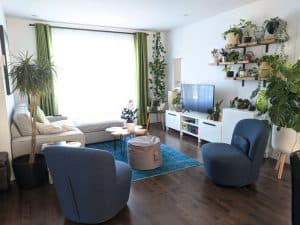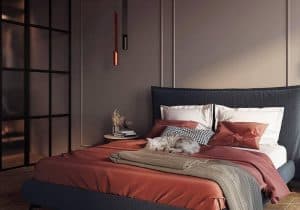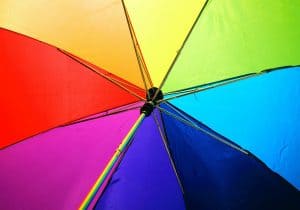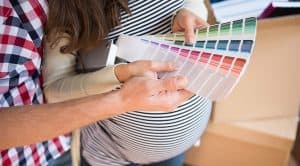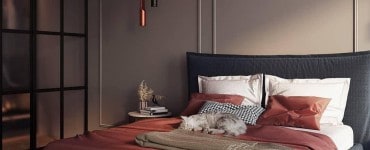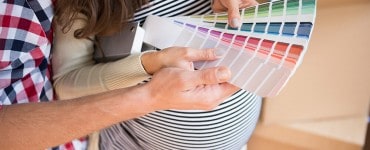The primary colors are red, blue, and yellow. These are the three pigment colors that can never be made when you mix any color. The primary colors are combined to form the rest of the colors. You can also mix them with black or white to form lighter tones or tints and darker hues or shades of these colors.
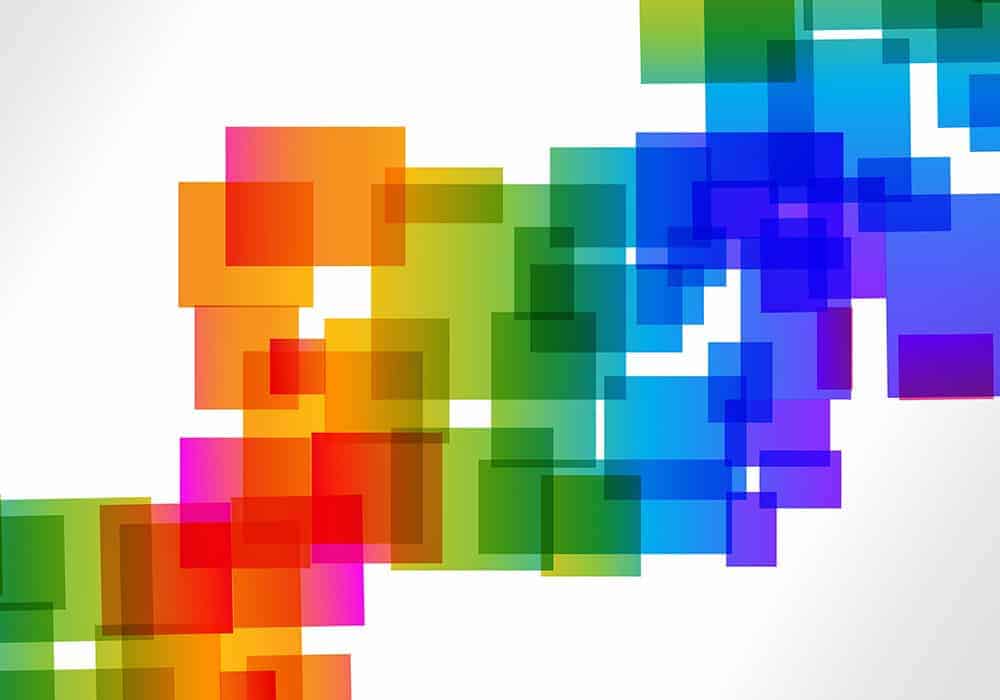
The majority of primary colors are warm although blue is the one responsible for most cool colors.
Primary Colors and the Color Wheel
As an important part of the color theory, the color wheel is divided into cool and warm colors. On the wheel’s cool side, you will see shades of blue, green and violet that move from bright green to blue green, to ocean blue, cobalt then on to purple, and finally, violet.
Yellow, orange, and red are regarded as warm colors because these are fire’s colors. It is also said that these colors advance, which means that they look like they come forward. Warm colors can make walls feel much closer than they really are. These colors are most commonly used for accents and upholstery. They can also make rooms feel cozier.
The 4-primary color wheel has four primary colors namely red, yellow, green, and blue. This is different from the color mixing wheel that only got three primary colors.
In 1878, the German psychologist Ewald Hering who called the colors as psychological primaries was the one who created the 4-primary color wheel. This is used in the commercial paint and color industries and is an excellent way to teach and understand the differences between cool and warm colors.
But even before the time of Hering, Leonardo da Vinci was already able to recognize the four simple colors. What made them different is that Hering was able to organize the colors into the circular model to allow an easier way of observing the colors and their different combinations. Hering used this color wheel to show the amounts of cool and warm hues that went into the creation of the different shown colors. This made it a handy visual reference to see the amount of color that is required to create a particular shade.
This also reveals how every primary color has a cool and warm side alike. This also shows the colors that complement each other and those colors that oppose each other. The complementary colors mix great together. On the other hand, opposing colors usually don’t blend or mix together and must be avoided at all costs.
The Importance of Primary Colors
Colors are crucial aspects when planning your interior design. If you use bright red instead of jet black, this will create a completely different feel.
There are numerous colors you can choose and use for your interior design but out of all these, the primary colors are what matter more than anything.
Primary colors may be the most basic out of all colors but these are the colors used for creating the rest of the colors. This is why it is important that you have a good understanding of these primary colors. You also have to be wise when you use them for your interior design projects.
As mentioned earlier, the primary colors are blue, yellow, and red. You can use red if you want to inject energy into your design or if you wish to show some strong emotions such as passion and love. Yellow, on the other hand, is a positive color that you can use to add a touch of optimism or happiness to your design. Finally, blue is the color that often carries numerous connotations. This can be used to express authority and dignity.
Aside from the expression of certain emotions, red, blue, and yellow can also be used for developing tertiary and secondary colors such as green, purple, and orange. You probably don’t pay attention to it that much when you are using tertiary or secondary colors when planning your design but you could make it more effective and convey a message better if the right colors are used.
Primary Colors and Interior Design
Primary colors serve as the foundation of the rest of the colors as white and black help with value and tone. However, primary colors are not really as common as their derivatives in interior design. You will see a lot of blue shades, light yellows, and greens but you won’t see much of the true shades.
The reason for this is probably because, in their truest forms, primary colors are usually associated with toy-covered floors and childhood. However, there is simply no reason for primary colors to look like only babies will appreciate them. In fact, primary colors can also be colors of pop art, modern art, and comic books.
Primary colors can also create a major impact, particularly when used together. These colors are bold, clear, and straightforward. These are often seen in modern design mixed with geometric shapes. However, these are most commonly used in smaller doses, like a chair there and painting here. These are also available in derivations that are more muted like burgundies, pinks, turquoises, and light blues.
In contemporary design, primary colors go well with gray and bright white tones. In other styles, however, these can go a bit wilder. There are times when you can see them in rugs with rich patterns.
Uses of Primary Colors
Try to use just one or two bright colors at the same time. When you use red, blue, and yellow together, you have to keep one or two colors in their pure hues then the third one should be muted down with the use of a color that either has more white or black or leans a bit to the left or right of the color wheel.
The rest can be created for the eye with the use of alternative textures and colors in the space. When you work with a primary color, you have the freedom to add extra textures and colors. You can opt for rich woods in furniture pieces and create pops of colors with flowers. It will give a great outlet for the eyes to make sure that the overall interior design won’t feel and look strict.


